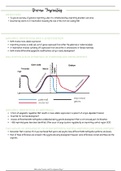Lewis wolpert Study guides, Class notes & Summaries
Looking for the best study guides, study notes and summaries about Lewis wolpert? On this page you'll find 41 study documents about Lewis wolpert.
Page 3 out of 41 results
Sort by
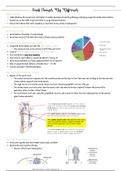
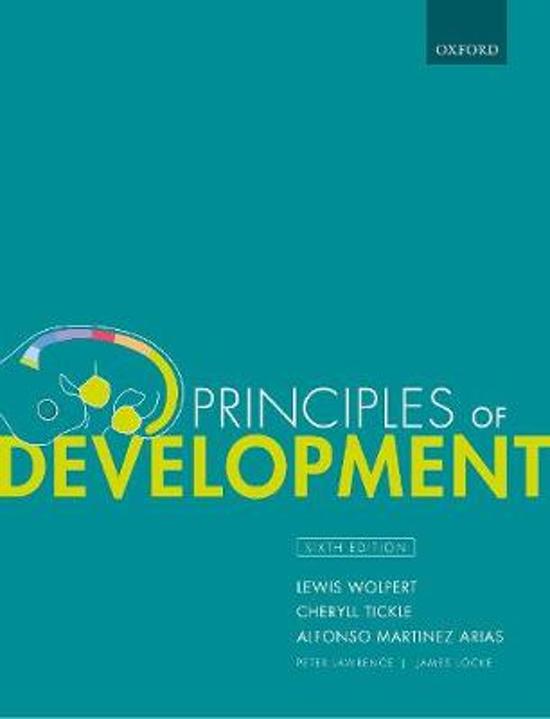
-
11. Small Changes Big Differences
- Class notes • 10 pages • 2020
-
- $4.58
- + learn more
- Understand how the neural crest contributes to cardiac development and the pathology underlying congenital cardiac abnormalities. - Explain how certain SNPs might contribute to congenital abnormalities. - Discuss the evidence that Notch signalling is important during cardiac morphogenesis
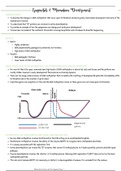
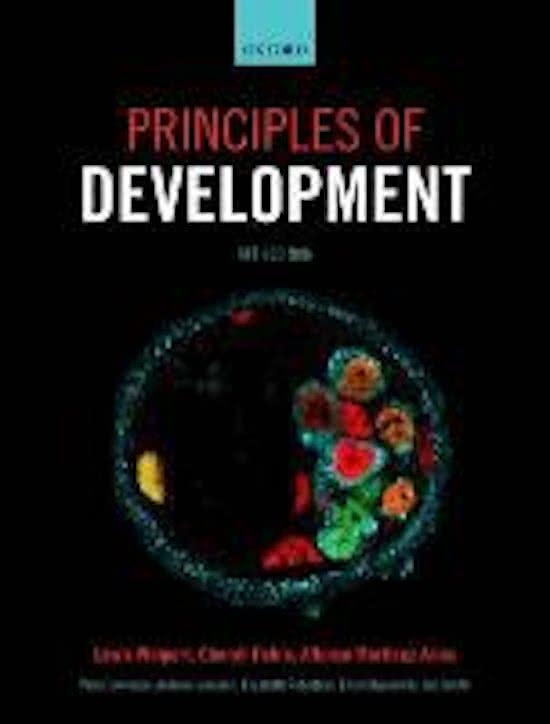
-
14. Epigenetic & Mamalian Development
- Class notes • 10 pages • 2020
-
- $4.58
- + learn more
- To describe the changes in DNA methylation that occur upon fertilization and during early mammalian development and some of the mechanisms involved - To understand that TET proteins are involved in active demethylation - To provide an example of how the epigenome can change post-embryonic development - To have been reminded of the method of Chromatin Immunoprecipitation and introduced to Bisulfite Sequencing
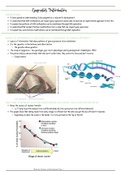

-
12. Epigenetics Introduction
- Class notes • 10 pages • 2020
-
- $4.58
- + learn more
- To have gained an understanding of why epigenetics is relevant to development - To understand that DNA methylation can impact gene expression and be able to describe an experimental approach to test this - To explain how patterns of DNA methylation can be maintained through DNA replication - To understand that covalent histone modifications form a code that can impact gene expression - To explain how some histone modifications can be maintained through DNA replication
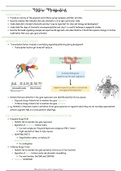

-
13. Histone Modifications
- Class notes • 9 pages • 2020
-
- $4.58
- + learn more
- Provide an overview of the polycomb and trithorax group complexes and their activities - Describe evidence that indicates stem cell chromatin is in an open ‘permissive’ state - Understand what is bivalent chromatin and why it may be important for stem cell biology and development - Understand the steps of chromatin immunoprecipitation and why it is a useful technique in epigenetic studies - Describe the Nodal signalling example and experimental approach, and understand how it illustrates ...
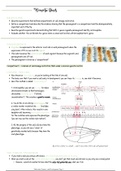

-
2. Homeotic Genes
- Class notes • 8 pages • 2020
-
- $4.58
- + learn more
- Describe experiments that defined compartments of cell lineage restriction. - Define a compartment and describe the evidence showing that the parasegment is a compartment and the developmentally important unit of the fly. - Describe genetic experiments demonstrating that HOM-C genes regulate parasegment identity in Drosophila. - Evaluate whether the vertebrate Hox genes share a conserved function with Drosophila HomC genes
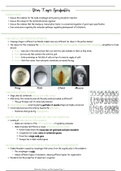

-
10. Germ Layer Specification
- Class notes • 8 pages • 2020
-
- $4.58
- + learn more
- Discuss the evidence for the nodal morphogen acting during mesoderm induction. - Discuss the concept of the vertebrate dorsal organiser. - Discuss the evidence that the brachyury transcription factor is a conserved regulator of germ layer specification. - Draw conclusions regarding the molecular pathways regulating development of Urbilateria.
- To give an overview of genomic imprinting, when it is initiated and how imprinting disorders can arise - Describe key events in X-inactivation including the role of the Xist non-coding RNA
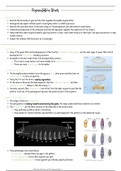

-
1. Segmentation Genes
- Class notes • 7 pages • 2020
-
- $4.58
- + learn more
-Describe the hierarchy of gene activity that regulates Drosophila segmentation -Distinguish and explain methods used to investigate protein vs mRNA expression -Describe the syncytial nature of the early stages of fly development and understand its significance. -Understand and describe at the molecular level how the Gap genes regulate the expression of Eve stripe 2 -Make predictions about segment polarity gene expression in a pair-rule mutant embryo or about pair-rule gene expression in a Gap m...
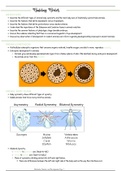

-
8. Building Bodies
- Class notes • 7 pages • 2020
-
- $4.58
- + learn more
- Describe the different types of animal body symmetry and the main body axes of bilaterally symmetrical animals. - Describe the features that define diploblasts versus triploblasts. - Describe the features that define protostomes versus deuterostomes. - Understand the importance of the Ediacaran and Cambrian fauna in animal evolution. - Describe the common features of phylotypic stage chordate embryos. - Discuss the evidence indicating that Pax6 is a conserved regulator of eye development. - ...
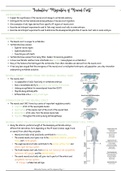

-
7. Induction Migration of Neural Crest
- Class notes • 7 pages • 2020
-
- $4.58
- + learn more
- Explain the significance of the neural crest lineage to vertebrate anatomy. - Distinguish the ventral-lateral and dorsal pathways of neural crest migration. - Give examples of cell types derived from specific AP regions of neural crest. - Describe and interpret experiments used to ‘fate map’ neural crest cells in avian embryos. - Describe and interpret experiments used to determine the developmental potential of neural crest cells in avian embryos.

How did he do that? By selling his study resources on Stuvia. Try it yourself! Discover all about earning on Stuvia



